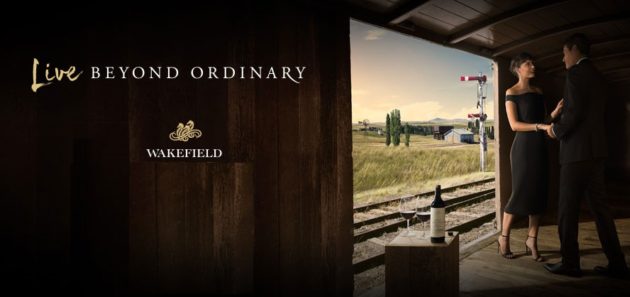

I remember the last time I was up in ‘The Clare’, the other valley up north of the Barossa and Eden Valleys in South Australian wine country.
As we slowly drove along a gorgeous, country road a large, rust coloured kangaroo suddenly leapt out from between old gum trees and was soon bounding along beside us without a care in the world.
Mid-morning I was soon sitting on a rise above Jeffrey Grosset’s Gaia Vineyard, sipping his impeccable 1984 Auslese style Riesling and eating a delicious leek flan prepared for us by his partner Stephanie Toole, herself the vigneron of the nearby Mount Horrick’s winery. I was looking out under a clear duck-egg blue sky, far out across the land and all the way down to the Gulf of Saint Vincent -who just happens to be the patron saint of wine.


The night, (or in truth just a few hours) before I had staggered out of the Adelaide Casino in a somewhat untidy condition and on the long drive up the highway I was feeling as grimy and unholy as any urban back lane gutter. Now I was in the Clare, a region first planted to vines by Jesuit monks in the 1830’s, having a spiritual epiphany of my own, my soul was being cleansed, my sins forgiven, my guilt washed clean away and my faith restored, by a wine, clean air, a clear sky, a view and a home baked leek tart. Perhaps I had died and gone to heaven but, just then I was in too good a place to care.


Later that afternoon we sampled a decade of vintages of Geoff’s Rieslings from the Polish Hill and the Watervale, (Springvale) vineyards, as well as barrel samples of other masterpieces from the winery. Geoffrey Grosset may not be the messiah yet the small group of us gathered there that day were well aware we were in the presence of greatness and the wines we sampled were incredibly special. I have never repeated yet never forgotten that event in my life, I can still taste every one of those amazing wines, yet it was almost 20 years ago to the day.
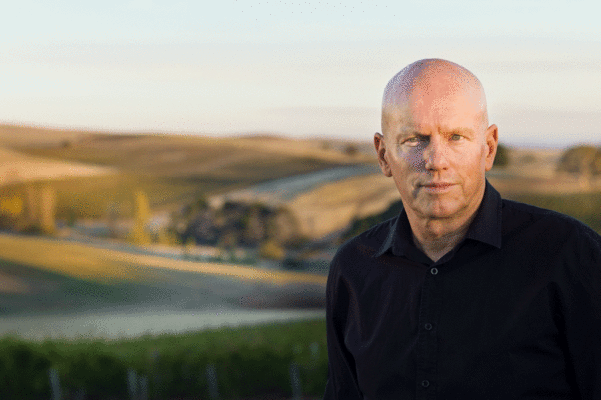

At a little over 100 kilometers north of Adelaide, at the tip of the Mount Lofty Ranges, the Clare Valley is a region of rolling hills and sweeping valleys, lush with native Australian bush, prime farmland and pristine vineyards. There are five distinct sub-regions within its boundaries, Auburn, Watervale, Sevenhill, Polish Hill River and Clare and the area is home to some of the world’s most famous Riesling wines along with intensely flavoured, full, rich and yet elegant Shiraz, usually made from very old vines.
Vineyards are planted at 400 to 500 meters above sea-level and the cool to cold nights allow for a slower ripening period, producing small, concentrated berries with exceptional balance and flavours. Soils vary from sub-region to sub-region but are mostly red and brown loams to over clay and calcareous rock.
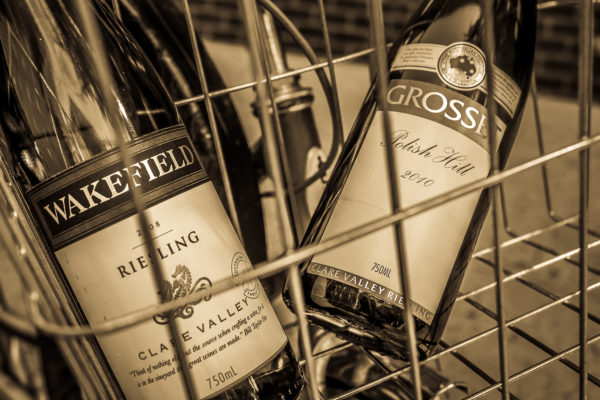

Long regarded for its incredible, flinty dry, long lived Riesling wines, the region also produces exceptional Shiraz and Cabernet Sauvignon and recently the World Association of Wine Writers and Journalists voted the Taylors of Wakefield winery, 2012 Saint Andrews Shiraz their ‘2016 Wine of the Year’ recognizing it as the world’s most awarded wine on the international show circuit for the previous twelve months.
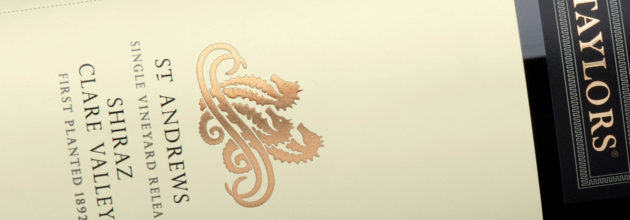

This is an impressive accolade and a welcome one for a breathtaking region deserving of such recognition.
The Media Release of the Event:
The 2012 St Andrews Shiraz was ranked highest by WAWWJ for the wine’s award wins during 2015, including Best Shiraz at the Shanghai International Wine Challenge, Double Gold at the Tasters Guild International, and Gold at the Decanter International Wine Challenge.
Since its release in 2014, the wine has tallied an impressive 25 gold medals and one trophy from wine shows both in Australia and abroad.
In addition to the ‘Wine of the Year’ recognition, Taylors is the only Australian winery to hold its position as one of the five most awarded wineries in the world, an honour it has claimed four years running. Out of the Top 100 most awarded wines in the world, Taylors has more wines than any other Australian winery, amassing a total of four wines on the list.
The ranking comes as Taylors Wines celebrates a milestone of achieving its 200th Gold Medal win for the 2016-17 financial year, recently claiming two Double Gold and one Gold at the Berlin International Wine Competition and Gold at the Great American International Wine Competition.
Commenting on this year’s report, Taylors Wines third-generation Managing Director Mitchell Taylor said: “We’re honoured and humbled to be recognized yet again by the WAWWJ. To not only remain as one of the top five most awarded wine producers, but to take the top spot as most awarded wine in the world is an exciting accomplishment for our small team.”
“The 2012 St Andrews Shiraz is a significant wine in our history, going on to be one of the most awarded wines we’ve ever made.”


The World Ranking Wines and Spirits (WRWS) is commissioned and evaluated by the WAWWJ every year with the purpose to develop an internationally recognized ranking system for the numerous wine shows and competitions held around the world. First founded in 1996, today the WAWWJ consists of 13,500 wine journalists, bloggers and judges representing 80 different countries.
Other accolades awarded to Taylors include:
- Most awarded Cabernet Sauvignon in the Best Cabernet in the World Ranking for the St Andrews Cabernet Sauvignon 2012
- Most awarded Australian Chardonnay in the Best Chardonnay in the World Ranking for the Jaraman Chardonnay 2014
- Taylors Estate Merlot 2014 is the highest ranked Australian Merlot on the Best Merlot in the World Ranking
To compile the WRWS, the WAWWJ evaluates the results from a selection of more than 80 key international wine contests (out of the more than 450 wine shows held around the world), including the Vinalies Internationales (France), International Wine and Spirits Competition (England), Tasters Guild International (USA), and closer to home, the Sydney International Top 100.


The Taylors Story
Bill Taylor Senior and his sons Bill and John were wine merchants in Sydney Australia who in the 1960’s were having wines contract made for them at the Clare Vale Co-operative by the late great Jim Barry.
In 1969 the family purchased land by the Wakefield River in the Clare Valley in order to fulfill their ambitious dream to create their own, high quality, full bodied red wines. Today the wine business is run by third generation Mitchell Taylor.
It didn’t take long for the family’s bold vision to be realized – and critical recognition soon followed. The very first ever vintage release was entered into the Royal Adelaide Wine Show and took home the coveted Montgomery Trophy for best red wine in show. Their 1973 vintage release won a gold medal at every national wine show it was entered in until it was ‘retired’.
The family’s conviction that the red, terra rossa soils of the Clare Valley was perfect for making wine was borne out with a surprise discovery during the excavation of the vineyard dam. The fossilized remains of tiny seahorses were found in the limestone bedrock– confirmation that the area had once been the bed of an ancient inland sea. After this discovery, the seahorse was adopted as the wine’s emblem, with three representing one for each generation of the family to be involved in managing the winery.
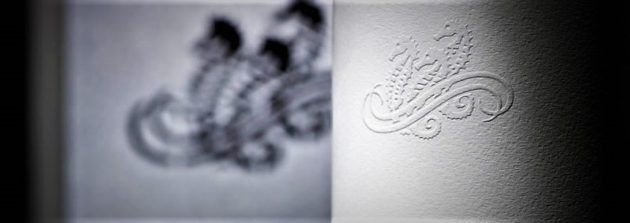

The History of St Andrews Vineyard…
For over 40 years, from 1891 until 1934, the St Andrews vineyard at Auburn was one of the leading wine producers in the Clare Valley. The property was developed by two Scotsmen, John Christison (1849-1911) and David Alexander Lyall (1860-1956) and was named in honour of the patron saint of Scotland, St. Andrew.
On the 21st of September 1891, John Christison and David Lyall purchased Sampson Montgomery’s 323-acre farming property at Auburn with the intention of planting vineyards and orchards. Planting began at St Andrews in 1891 and continued for the next two seasons. By 1895 St Andrews had 115 acres of vineyards and 19 acres of orchard and it was already being referred to as ‘a model farm’. One agricultural journalist wrote, ‘The vineyard and orchard are the best laid out plantations it has been my privilege to see in South Australia.’
The suitability of the land for vine growing was recognized from the outset. To quote a contemporary writer of the time (1896), ‘The character of the country changes a good deal through the vineyard, but the bulk is a light loamy soil containing a quantity of decomposed slate, and this rests on a clay sub-soil. But occasionally there are belts of limestone subsoil, and wherever this is the case the 2½ year old vines have made wonderful growth.’
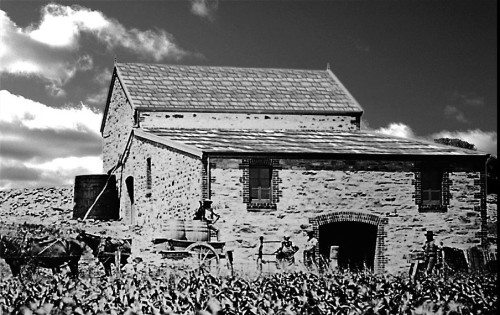

Ernest Whitington of The Register wrote in 1903, ‘The valley of the Wakefield contains some of the finest land in South Australia. It does one’s heart good to drive through it.’
The grape varieties planted at St Andrews were Cabernet Sauvignon, Shiraz, Malbec, Mataro, Cabernet Gris and Zante Currant (used mainly for dried fruit). In good years they produced up to six tons of dried currants. The orchards were planted to apples (900 trees), plums (600 trees) and apricots (300 trees).
Construction of the stone, gravity flow winery and cellars began in 1895 and it was used for the first time in the vintage of 1896 when 3500 gallons of wine were made (15,911 litres). The original wine cage was the hollow log of a large gum tree and the press a 1.5 tonne log which worked as a lever. Production of wine increased rapidly over the next few years – 10,000 gallons in 1897, 15,000 gallons in 1898, increasing to 28,000 gallons in 1903.
Additions were made to the cellars in 1897-98 bringing the storage capacity to 65,000 gallons. A cooling system was introduced that same year.
In 1896, a reporter from the Observer wrote; ‘The Wakefield River runs through St Andrews, and Mr Lyall has ingeniously diverted a small stream for irrigation purposes. The sight which met our view upon entering the property was delightfully refreshing and cheering…’
The winery cellars were described in 1897: ‘The cellars are on the hill side, are well built, and every care has been taken in arranging, so that the whole work is done by gravitation.… The cellars are three stories high, one being underground, and the second storey is half underground. The cellar, casks, and everything connected with the cellar are scrupulously clean, and the wines sampled by us proved, without doubt, that Mr Lyall is determined that the St Andrew’s wine will make a name for South Australia.’
And the St Andrews wines did become very well-known. Christison & Lyall concentrated on making a light claret style wine for the export market with much of the wine being exported to England. They also produced ‘a very fine fruity port’ for which there was strong local demand.
Ernest Whitington from The Register, reported in The South Australian Vintage 1903, ‘Only the best sorts of vines are planted at St Andrews and most of them are trellised. In every way, the vineyard is worked on the most up-to-date scientific principles… The winery and cellars are well built, substantial and fitted with modern appliances… Mr Lyall has succeeded in making a first-class wine at St Andrews and it is admirably suited for the export trade…He is one of the most popular men in the district and everyone wishes him the best of luck.’
In August 1907 David and Emily Lyall purchased John Christison’s interest in the business. By 1910 the storage capacity of the winery had grown to 80,000 gallons, making it the second largest winery in the Clare district. The winemaker from 1919 to 1926 was Michael Auld, later Managing Director of Stonyfell Wines (1943).
Vintages in the 1920s produced up to 28,000 gallons of wine. The last vintage was in 1932. The Lyalls sold St Andrews in March 1934 to pastoralist Joseph Kenworthy. David Lyall retired to Walkerville. He died at Medindie on 27 August 1956 aged 96; buried at North Road Cemetery.
Joe Kenworthy was more interested in livestock grazing and race-horses than wine production and most of the vineyards were pulled out. He developed a Merino stud at St Andrews and converted the winery into a woolshed. The St Andrews house was rebuilt in its current two-storied form in 1939. The Kenworthys were great supporters of the local community. They would often give the use of their place for an annual fundraising event. Joseph Kenworthy died in 1943 aged 70. His funeral cortège travelled from St Andrews to the Auburn Cemetery.
Mrs. Blanche Kenworthy remained at St Andrews for a further 30 years following her husband’s death. Mrs. Kenworthy, who became one of the largest landowners in the district; died in May 1972. In 1959, prior the Mrs. Kenworthy’s death, the homestead and some of the Kenworthy’s land passed to Lawrence and Daphne Iskov. (Daphne was Blanche Kenworthy’s grand-daughter).
The Taylor family quickly recognized the potential of the adjacent St. Andrews property when they were first establishing their vineyards in the Clare Valley, and wanted to make it a part of the estate. So, on 2nd of November 1995 the family purchased the property and became proud custodians of a piece of Australian wine history. They immediately set about the task of ‘recreating history’ and began restoring the property to its original purpose, a vineyard to produce handcrafted wines that stand alongside Australia’s iconic wine names and proudly showcase their Clare Valley origins.


The St Andrews vineyard now forms part of the overall Taylor family estate, which consists of 750 hectares in total with over 400 hectares under vine, planted in the finest terra rossa soils.
Taylors St Andrews wines
In 1999 the first of the Taylors St Andrews wines were released, including a Cabernet Sauvignon, Chardonnay, Shiraz and Riesling. Fruit for the St Andrews wines is selected from those blocks on the family’s estate that consistently produce the finest examples of Cabernet Sauvignon, Shiraz, Chardonnay and Riesling.
The Riesling is predominantly sourced from the St Andrews vineyard – block A80 and A81; an east-facing, sheltered site on the southern border of Watervale.
The Shiraz is predominantly sourced from two gently west facing sites; The 40 acre block (one of the oldest on the estate) and the St Andrews vineyard – block A30; a block that has been delivering fruit quality deemed ‘from heaven’ and so nicknamed ‘God’ by the winemakers.
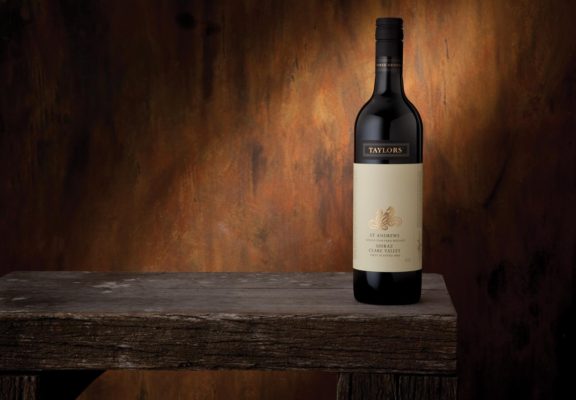

Chardonnay is sourced from the St Andrews vineyard – blocks G30 and V20; a north-eastern site planted to French chardonnay clones that consistently delivers wine of greater ‘palate completeness’ and ‘elegance’.
The Cabernet Sauvignon is predominantly sourced from the St Andrews vineyard – block A60 and A70 block; vineyards that whilst basking in the sheltered warmth of the river flat still yield very shy bunches of tiny berries, resulting in those highly concentrated varietal fruit flavours sought by the winemaker for the flagship range.
The consistency of quality that these blocks deliver along with optimal viticultural techniques and a handcrafted approach to winemaking allow the unique site characteristics to shine through, making the St. Andrews wines a true reflection of what is known as ‘terroir’. Indicative of the Taylor family’s commitment to producing a benchmark Clare Valley wine, the St Andrews wines are released only in what are deemed ‘exceptional’ vintages and with the Clare Valley region’s climate being what it is, this occurs more often than not.
Geoffrey Grosset and the Taylor Family’s Wakefield wines are both available in Cambodia.
